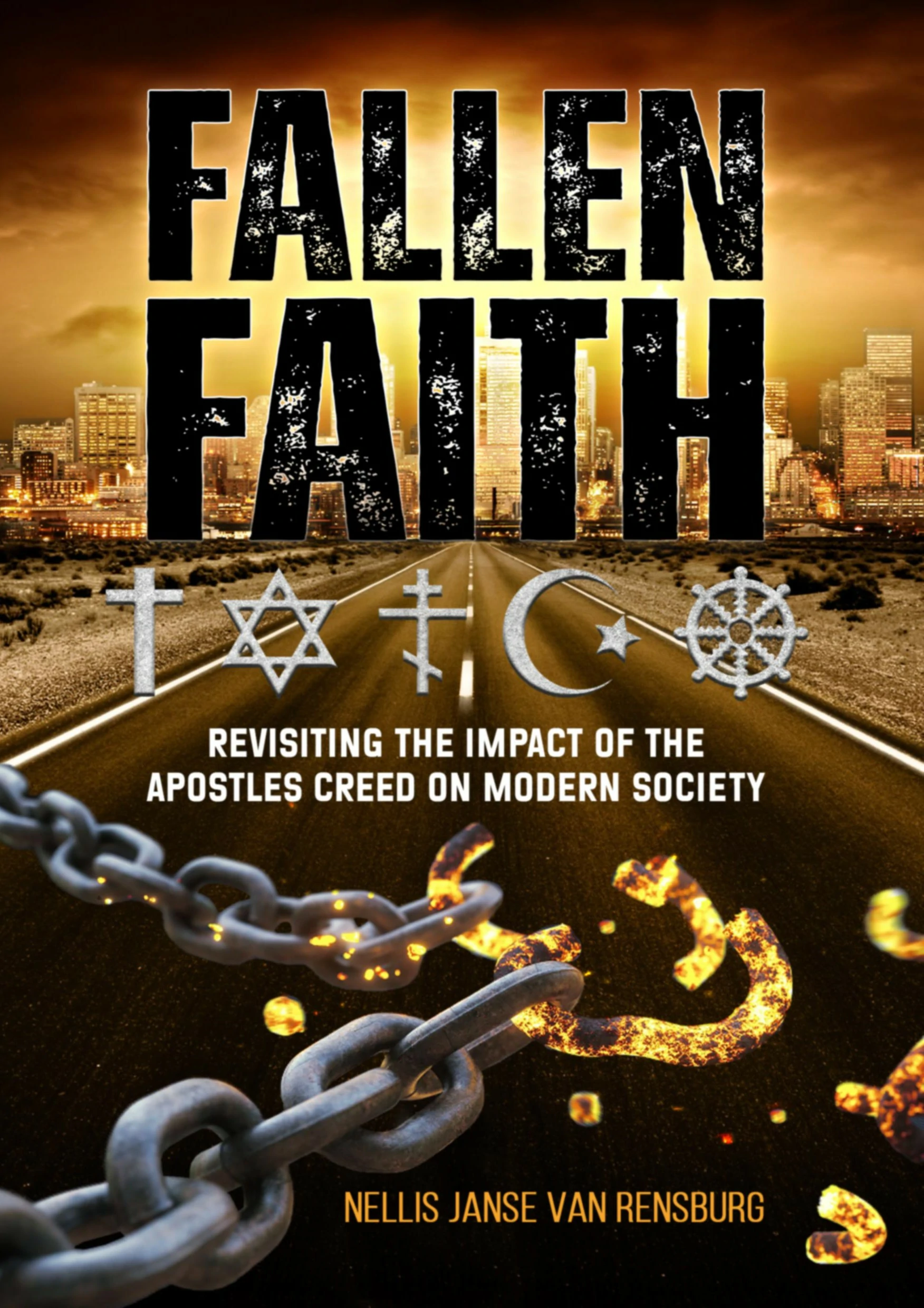Apostles Creed
| THE APOSTLES’ CREED | BIBLE REFERENCES |
|---|---|
| I believe in God, (1) the Father Almighty, Maker of Heaven and Earth, (2) And in JesusChrist, (3) His only Son, (4) our Lord, (5) who wasconceived by the HolySpirit, (6) born of theVirgin (7) Mary, sufferedunder Pontius Pilate, (8) was crucified, (9) dead (10) and buried. (11) He descended into Hell. (A) The third day (12) He arose from the dead, (13) He ascended into Heaven (14) and is seated at the right hand of God, (15) the Father Almighty. From thence He shall come to judge the quick* and the dead. (16) I believe in the Holy Spirit, (17) the church universal, (18) the communion ** of saints, (19) the forgiveness of sins, (20) the resurrection of the body, (21) and life everlasting. (22) | 1. Isaiah 44:6; 45:5 2. Genesis 1:1; John 1:1-3; Act 14:15 3. Luke 2:11; John 20:28 4. John 3:16; Pro. 30:4 5. John 20:28 6. Luke 1:35 7. Luke 1:27 8. Luke 23:23-25 9. John 19:20; Acts 4:10; all Gospels 10. 1 Corinthians 15:3 11. 1 Corinthians 15:4 A. 1 Peter 3:18; Luke23:43 12. 1 Corinthians 15:4 13. 1 Corinthians 15:4 14. Mark 16:19; Luke 24:51, Acts 1:11 15. Mark 16:19; Heb.1:3 16. 2 Tim.4:1; John 5:22 17. John 15:26; 16:7-8, 13-14; Acts 13:2 18. Galatians 3:26-29 19. Revelation 19:14; Heb. 10:25 20. Luke 7:48 21. 1 Thessalonians 4:16 John 6:39 22. John 10:28; 17:2-3 *”quick” means “spiritually alive” ** “communion” refers to “coming together” |
Every religion must have its own source of reverence, a verbal or written form, to give stability to their way of thinking. Just like in Christian theology, there must be a place of origin, a birthplace where it all started. This is of great importance! In Christianity, Christ is at the center and heart of all. There must then be a systematic method or some structure that a person can use to research or study the Christian faith and what happened at this specific time and in the history of the Christian faith.
Separate dominant groups within Christianity have produced massive systems of Eastern Orthodoxy, Roman Catholicism, Lutheranism, Calvinism, Anglicanism, and the various Free Church modifications of such groups as Congregationalists, Baptists, Methodists, Quakers, and Pentecostals. Systematic Theology is designed to bring together the essential truths of the Bible in order that the reader might understand what is involved in becoming a follower of the Lord Jesus Christ. For the new Christian, a systematic layout of the basic beliefs will give you a quick overview of the Christian faith. Theology is knowledge about God, and religion is the practice of that knowledge.
Every religion must have its own source of reverence, a verbal or written form, to give stability to their way of thinking. All Christians throughout history have acknowledged that the only possible common ground is that which the majority of Christians already accept, the Biblical Scriptures. The needs of the church were calling out for something extra. Out of this need, systematic theology developed, which consists of three avenues or roots.
The first one was to challenge false doctrine and their teachers. The second was to get a systematic structure for the doctrine of the Christian faith, and the third was to help and to offer guidance and mentorship to both new and established Christian converts, both before and after their baptism. This puts these teachings in a more systematic way, and we find evidence of them in the Old Testament. These are the teachings where they discuss the creation, the incarnation, and the resurrection of the dead, and all three came together only to prove and justify the belief in the “Trinity.” Irenaeus used the “Apostles’ Creed” as an outline, and this was the birthplace and pattern that influenced systematic theology for thousands of years.
The primary letters of Paul accept and take for granted this apostolic preaching. On this belief, Christian theology stands or falls: “For since we believe that Jesus died and rose again…” (1 Thess. 4:14; 1:10). The earliest faith was very clear, and Paul declared and said that the message of Christ is only this: Christ died for our sins in accordance with the scriptures; He was buried; he was raised on the third day in accordance with the scriptures.
We must remember that the “Apostle’s Creed” existed long before the New Testament Scriptures, when Christianity was undivided! The verbal and written interpretations that have developed into the most universal creed are the “Nicene Creed” (issued at the Council of Nicaea in 325), which was put together and designed out of the original source of systematic theology in Scripture. A careful reading of the final form reveals how much even the most non-creedal Christians owe to this historic formulation of Christian faith.
In Summery:
Systematic theology is the process of bringing together the essential truths of the Bible to help people understand Christian faith. It provides a quick overview of basic beliefs, especially for new Christians.
The three main purposes for the development of systematic theology were:
- To challenge false doctrines and their teachers.
- To create a structured system for Christian beliefs.
- To provide guidance and mentorship for both new and established Christians.
Theology is the knowledge of God, while religion is the practice of that knowledge.
The Apostles’ Creed served as an early outline for systematic theology and existed before the New Testament Scriptures were formally compiled.
The core of Christian belief, as expressed in the letters of Paul, is that Jesus died for our sins and was raised on the third day in accordance with the scriptures.
The Nicene Creed (325 CE) was developed from the original source of systematic theology in the scriptures, building on earlier creeds like the Apostles’ Creed. This formulation of faith is influential for all Christians.Systematic theology is the process of bringing together the essential truths of the Bible to help people understand Christian faith. It provides a quick overview of basic beliefs, especially for new Christians.
The three main purposes for the development of systematic theology were:
- To challenge false doctrines and their teachers.
- To create a structured system for Christian beliefs.
- To provide guidance and mentorship for both new and established Christians.
Theology is the knowledge of God, while religion is the practice of that knowledge.
The Apostles’ Creed served as an early outline for systematic theology and existed before the New Testament Scriptures were formally compiled.
The core of Christian belief, as expressed in the letters of Paul, is that Jesus died for our sins and was raised on the third day in accordance with the scriptures.
The Nicene Creed (325 CE) was developed from the original source of systematic theology in the scriptures, building on earlier creeds like the Apostles’ Creed. This formulation of faith is influential for all Christians.

Fallen Faith Paperback






